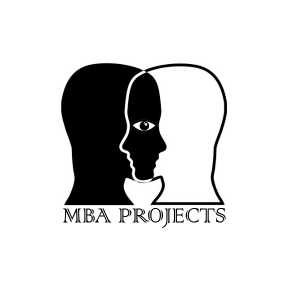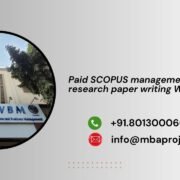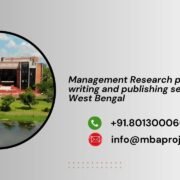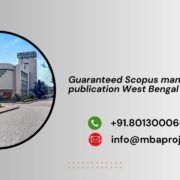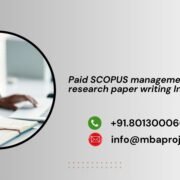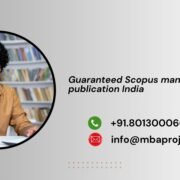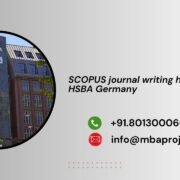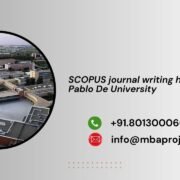Paper writing for SCOPUS management journal publication West Bengal
Paper writing for SCOPUS management journal publication West Bengal
Paper writing for SCOPUS management journal publication West Bengal. Publishing in SCOPUS-indexed management journals has become a mark of academic excellence and global credibility. For researchers, PhD candidates, and academicians in West Bengal, achieving publication in a reputable SCOPUS journal not only boosts career prospects but also establishes authority in the management research community. However, crafting a research paper that meets SCOPUS standards requires precision, structure, and professional expertise. That’s where expert paper writing services for SCOPUS management journal publication in West Bengal come into play.
Importance of SCOPUS Management Journal Publications
SCOPUS is one of the largest and most prestigious databases of peer-reviewed journals, managed by Elsevier. For management researchers, publishing in SCOPUS ensures:
- Global visibility and international reach
- Higher citation potential and academic credibility
- Eligibility for PhD evaluation and academic promotions
- Recognition by UGC, AICTE, and NAAC
- Networking opportunities within global management communities
In West Bengal, universities such as IIM Calcutta, University of Calcutta, IISWBM, and Jadavpur University highly value SCOPUS publications for faculty advancement and research excellence.
Why Researchers in West Bengal Seek Professional SCOPUS Paper Writing Help
Writing a SCOPUS-level management research paper demands more than academic knowledge—it requires adherence to strict publication protocols, advanced research methodologies, and academic writing expertise.
Many researchers in West Bengal struggle with:
- Selecting the right research topic and problem statement
- Preparing a methodologically sound study
- Meeting journal formatting and referencing standards
- Responding to peer review and editorial feedback
- Avoiding predatory or cloned journals
Professional SCOPUS management paper writing services bridge these gaps by providing comprehensive, ethical, and publication-ready support from start to finish.
Professional Paper Writing Services for SCOPUS Management Journals
Our SCOPUS management journal paper writing services in West Bengal are designed for researchers aiming to publish in internationally recognized journals. Each paper is written with a focus on originality, empirical depth, and SCOPUS compliance.
1. Topic Selection and Research Planning
We begin by analyzing your area of interest to suggest high-impact research topics aligned with SCOPUS trends. Current management themes include:
- Business Sustainability and ESG
- Digital Marketing and Consumer Analytics
- Strategic Innovation and Entrepreneurship
- Human Resource Development in Emerging Economies
- Financial Risk Management and Investment Behavior
- Supply Chain Optimization and Operations Strategy
Every topic is customized for relevance, novelty, and journal acceptance potential.
2. Research Paper Writing and Structure
Our expert team of PhD-qualified management writers creates a research paper following SCOPUS guidelines, including:
- Abstract and Keywords
- Introduction and Research Problem
- Literature Review (with recent and authentic citations)
- Research Methodology and Hypothesis Development
- Data Collection and Statistical Analysis
- Findings, Discussion, and Managerial Implications
- Conclusion and Future Scope
We ensure your manuscript is clear, logically structured, and academically sound.
3. Data Analysis and Interpretation
Our statisticians conduct in-depth quantitative or qualitative analysis using tools such as:
- SPSS, AMOS, SmartPLS, or NVivo
- Hypothesis testing, regression models, SEM, or factor analysis
- Thematic and content analysis for qualitative studies
We interpret findings accurately to highlight managerial insights and practical implications that appeal to SCOPUS reviewers.
4. Editing, Formatting, and Plagiarism Check
To meet SCOPUS editorial standards, each manuscript undergoes:
- Professional editing and proofreading
- Formatting as per journal requirements (APA, Harvard, IEEE)
- Plagiarism detection and removal using Turnitin/iThenticate
- Reference management through Mendeley or EndNote
The result is a publication-ready manuscript with 0% plagiarism and polished academic language.
5. Journal Selection and Submission Assistance
Our experts identify suitable SCOPUS-indexed management journals based on:
- Research topic relevance
- Journal ranking and impact factor
- Review time and acceptance rate
- Authenticity verification via the official SCOPUS database
We assist with manuscript submission, cover letter drafting, and peer review coordination, ensuring smooth communication with editors.
6. Publication Tracking and Verification
Once accepted, we provide:
- DOI (Digital Object Identifier)
- Journal issue details
- Scopus indexing verification
- Official publisher confirmation (Elsevier, Emerald, Springer, Taylor & Francis)
Every publication is 100% genuine, traceable, and recognized globally.
Advantages of SCOPUS Paper Writing Services in West Bengal
✅ Guaranteed Quality
Each paper is crafted by experienced management researchers who understand international publication standards.
✅ Time Efficiency
Researchers can save months of effort by outsourcing technical writing, analysis, and formatting to experts.
✅ Ethical and Authentic Publication
We publish only in verified, legitimate SCOPUS journals—never cloned or predatory ones.
✅ Academic Growth
A SCOPUS publication enhances your academic resume, increasing chances of promotion, research funding, and global collaboration.
✅ End-to-End Support
From conceptualization to publication confirmation, we manage the entire process with complete transparency.
Management Domains We Cover for SCOPUS Publication
Our services cover diverse areas of management research, including:
- Strategic Management
- Human Resource Management (HRM)
- Marketing and Consumer Behavior
- Financial Management and Accounting
- Entrepreneurship and Innovation
- Business Analytics and AI in Management
- Corporate Governance and Ethics
- International Business and Trade
- Operations and Supply Chain Management
Each domain is handled by subject matter experts to ensure accurate and relevant research contributions.
Why Choose Our SCOPUS Management Paper Writing Services
1. Experienced Academic Team
We have a network of PhD scholars, editors, and statisticians with proven SCOPUS publication experience.
2. Ethical and Transparent Workflow
We follow a completely transparent and ethical process—ensuring every journal is verified on the official SCOPUS source list.
3. Affordable Packages
We offer cost-effective publication plans designed for researchers, professors, and doctoral candidates across West Bengal.
4. Proven Track Record
We have successfully helped scholars from Kolkata, Durgapur, Siliguri, Howrah, and Asansol publish in top-tier SCOPUS management journals.
5. Personalized Guidance
Our experts provide one-on-one mentorship, helping you understand feedback and improve future publications.
Step-by-Step SCOPUS Publication Process
-
Topic Discussion and Approval
Share your research idea or thesis topic with our experts. -
Paper Writing and Data Analysis
Our writers and analysts create a structured, journal-compliant manuscript. -
Editing and Plagiarism Check
We refine the paper for language, formatting, and originality. -
Journal Selection and Submission
We shortlist authentic SCOPUS journals and submit your paper. -
Peer Review and Revisions
Our editors help you respond effectively to reviewer comments. -
Publication Confirmation and Verification
Receive your DOI, indexing proof, and publication certificate.
Serving West Bengal’s Academic and Research Community
We proudly serve management researchers, faculty members, and doctoral scholars from leading institutions across West Bengal, including:
- Indian Institute of Management (IIM) Calcutta
- University of Calcutta
- Jadavpur University
- IISWBM
- MAKAUT
- St. Xavier’s College Kolkata
- Techno India University
Our mission is to empower West Bengal’s research community with world-class SCOPUS publication support that meets global academic standards.
Conclusion
Publishing a research paper in a SCOPUS management journal is a critical milestone for any researcher aiming for academic excellence. With professional paper writing and publication support services in West Bengal, scholars can ensure that their work not only meets SCOPUS standards but also gains recognition among international audiences.
Our comprehensive assistance—from topic selection to final publication verification—makes your journey smooth, ethical, and successful. Choose professional support to transform your management research into a globally recognized contribution.
Thank you for reading our Blog “Paper writing for SCOPUS management journal publication West Bengal”.
Also, read our more BLOG here.
For Order “SCOPUS journal ” feel free to contact us at Mob: Call / WhatsApp: +91.8013000664 || Email: info@mbaprojects.net.in




